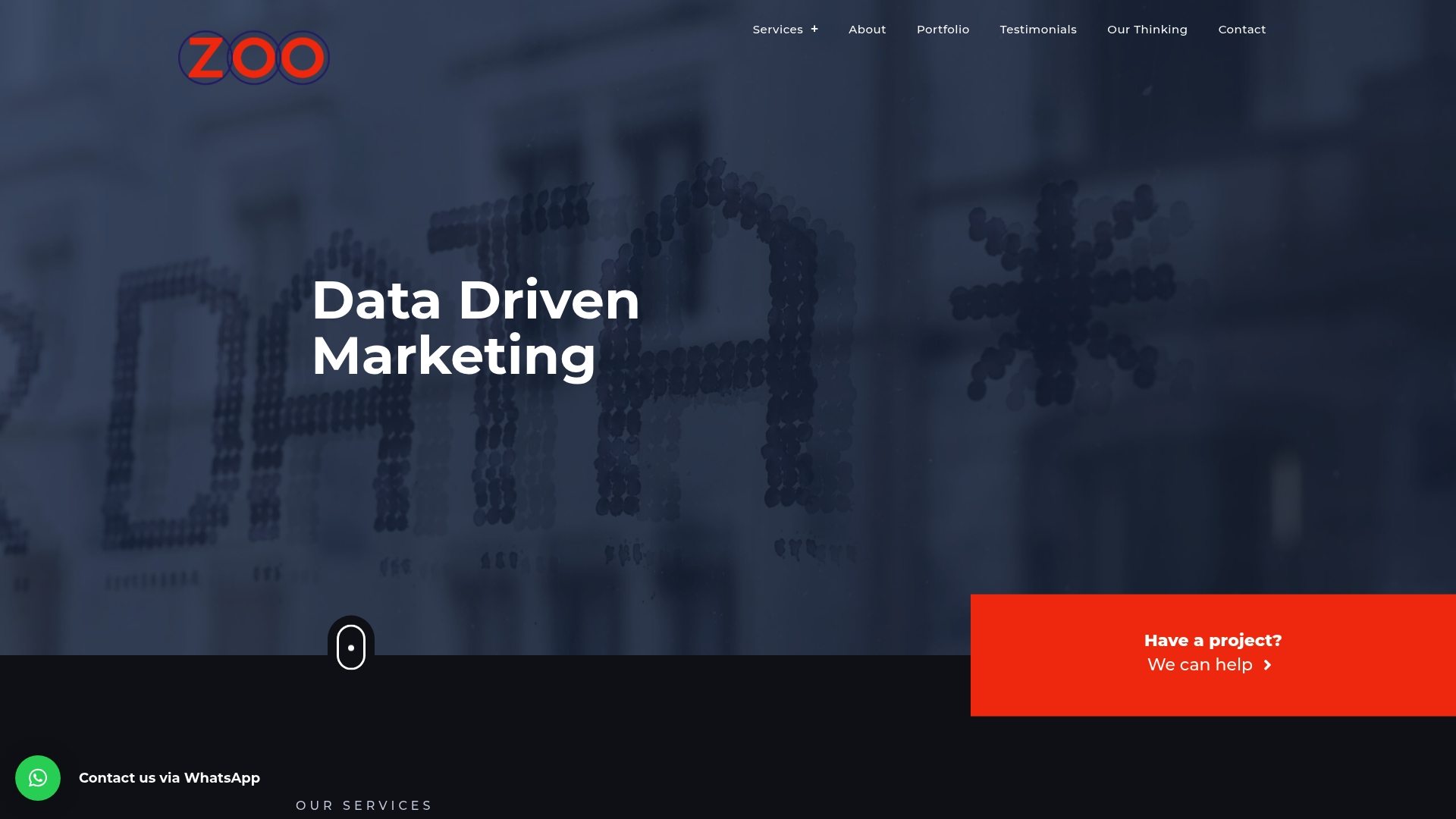Getting more people to your website is on every business owner’s mind. And yet, even with millions of sites fighting for clicks, just 0.63 percent of Google users click on something from the second page of search results. That seems bleak, right? Not quite. There are proven ways to break through the noise and bring real visitors straight to your site.
Table of Contents
- Optimise Your Website For Search Engines
- Leverage Social Media Marketing Strategies
- Create Quality Content Regularly
- Use Email Marketing Effectively
- Implement Paid Advertising Campaigns
- Engage With Online Communities And Forums
- Monitor And Analyse Traffic Data
Quick Summary
| Takeaway | Explanation |
|---|---|
| Optimise your website for SEO | Improve visibility on search engines by focusing on keywords, quality content, and technical structure. |
| Engage consistently on social media | Use targeted posts and engagement to connect with your audience and drive traffic. |
| Create high-quality content regularly | Provide valuable, original information to attract and retain website visitors. |
| Segment and personalise email campaigns | Tailor your email content to specific groups for better engagement and website traffic. |
| Monitor traffic data to refine strategies | Use analytics tools to understand user behavior and adjust your marketing efforts accordingly. |
1: Optimise Your Website for Search Engines
Search engine optimisation (SEO) represents a critical strategy for driving organic website traffic. By fine-tuning your website’s structure, content, and technical elements, you can significantly improve your visibility in search results and attract more potential customers.
According to research from the Search Engine Optimization conference, implementing strategic SEO techniques can dramatically enhance website performance and visitor engagement. Search engines like Google use complex algorithms to rank websites, which means understanding and applying SEO best practices is crucial.
Key SEO optimization strategies include:
Keyword Research: Identify and integrate relevant keywords naturally within your content
Quality Content Creation: Develop informative, original content that addresses user needs
Technical Website Optimization: Improve site speed, mobile responsiveness, and user experience
Keyword Placement matters significantly. Place primary keywords in strategic locations such as page titles, headers, meta descriptions, and within the first paragraph of your content. However, avoid keyword stuffing – search engines penalize content that appears artificially loaded with keywords.
Website structure also plays a pivotal role. Ensure your site has a clear, logical navigation system, with interlinked pages that help search engines understand your content hierarchy. Learn more about analyzing website performance to refine your SEO strategy and track your progress.
Remember that SEO is an ongoing process. Regularly update your content, monitor your website’s performance, and adapt to changing search engine algorithms to maintain and improve your search rankings.
2: Leverage Social Media Marketing Strategies
Social media has transformed digital marketing, offering businesses powerful platforms to drive website traffic and engage potential customers. Research from Pew Research Center indicates that over 72% of internet users actively participate in social media networks, presenting significant opportunities for strategic marketing.
Successful social media marketing requires a targeted and consistent approach. Your strategy should focus on platforms where your target audience is most active and create content that resonates with their interests and needs.
Key social media marketing strategies include:
Create Shareable Content: Develop engaging posts that encourage audience interaction and sharing
Consistent Posting Schedule: Maintain regular content updates to keep your audience engaged
Use Relevant Hashtags: Increase content visibility by using strategic and trending hashtags
Visual content performs exceptionally well across social platforms. Incorporate high-quality images, infographics, short videos, and interactive graphics that capture attention and communicate your message quickly. Each piece of content should include a clear call-to-action directing users back to your website.
Explore our comprehensive guide on social media marketing to gain deeper insights into developing an effective digital marketing strategy. Platforms like Facebook, Instagram, LinkedIn, and Twitter offer unique audience demographics and engagement opportunities.
Track your social media performance using analytics tools. Monitor metrics such as engagement rates, click-through rates, and referral traffic to understand which content drives the most website visitors. Continuously refine your approach based on these insights to maximize your social media marketing effectiveness.
3: Create Quality Content Regularly
Content creation stands as a powerful driver for increasing website traffic and establishing online authority. Research analyzing content performance demonstrates that high-quality, relevant content significantly enhances user engagement and search engine visibility.
Consistent content production transforms your website from a static digital brochure into a dynamic, engaging platform that attracts and retains visitors. The key is not just quantity, but delivering meaningful, valuable information that addresses your audience’s specific needs and questions.
Essential content creation strategies include:
Understanding Your Target Audience: Research their interests, pain points, and information requirements
Developing Original Perspectives: Offer unique insights that differentiate your content from competitors
Maintaining Consistent Publishing Schedule: Create a reliable content calendar to set audience expectations
Different content formats can help diversify your approach and maintain audience interest. Blog posts, videos, infographics, podcasts, and case studies provide multiple channels for sharing information and attracting website visitors. Each format offers unique advantages in communicating complex ideas and capturing audience attention.
Explore our comprehensive content marketing guide to refine your content strategy. Focus on creating educational, entertaining, or problem-solving content that provides genuine value to your readers.
Quality trumps quantity. Prioritize well-researched, carefully crafted content over frequent but shallow publications. Search engines and readers alike reward in-depth, authoritative content that demonstrates expertise and addresses user queries comprehensively. Track your content’s performance using analytics to understand what resonates with your audience and continuously improve your approach.
4: Use Email Marketing Effectively
Email marketing remains a powerful strategy for driving website traffic and nurturing potential customer relationships. Research examining marketing campaigns highlights its effectiveness in targeting specific audience segments and delivering personalized content directly to interested individuals.
Building an effective email marketing strategy requires careful planning and execution. The goal is not just sending emails, but creating meaningful connections that encourage recipients to visit your website and engage with your content.
Critical email marketing elements include:
Segmentation: Divide your email list into specific groups based on interests, behavior, or demographics
Personalization: Craft emails that speak directly to individual recipient needs and preferences
Clear Call-to-Action: Include compelling, visible links that drive traffic back to your website
Subject lines play a crucial role in determining whether your email gets opened. They should be concise, intriguing, and provide clear value. Avoid generic phrases and instead focus on creating curiosity or offering specific benefits that prompt recipients to click.
Discover advanced email marketing techniques to refine your approach. Implement email automation tools that allow you to send targeted campaigns based on user behavior, ensuring your content remains relevant and timely.
Regularly analyze your email performance metrics. Track open rates, click-through rates, and conversion rates to understand what content resonates with your audience. Continuously test and refine your email strategies, experimenting with different subject lines, content formats, and sending times to optimize your website traffic generation efforts.
5: Implement Paid Advertising Campaigns
Paid advertising provides a targeted approach to driving website traffic, allowing businesses to reach specific audience segments quickly and efficiently. Strategic ad campaigns can deliver immediate visibility and attract potential customers who might not discover your website through organic methods.
Multiple advertising platforms offer unique opportunities for businesses to increase website traffic. Google Ads, social media advertising, and display network campaigns enable precise audience targeting based on demographics, interests, and online behaviors.
Key considerations for effective paid advertising include:
Precise Audience Targeting: Select demographic and interest-based parameters matching your ideal customer profile
Compelling Ad Creative: Develop clear, engaging messaging that encourages clicks
Continuous Performance Monitoring: Track metrics and adjust campaigns in real-time
Budget allocation plays a critical role in paid advertising success. Start with smaller budgets, test different approaches, and scale campaigns that demonstrate positive return on investment. Conversion tracking helps you understand which ads generate genuine website visits and potential customer interactions.
Learn advanced strategies for online advertising to maximize your marketing effectiveness. Different platforms offer unique advantages: Google Ads provide search intent targeting, while social media platforms like Facebook and Instagram allow more granular demographic selection.
Experimentation is key. Test various ad formats, including text ads, display banners, video advertisements, and sponsored content. Monitor click-through rates, cost per click, and conversion metrics to refine your approach continuously. Remember that successful paid advertising is not about spending more, but spending smarter by understanding your audience and delivering precisely targeted messaging.
6: Engage with Online Communities and Forums
Engaging with online communities and forums represents a powerful strategy for driving website traffic and establishing industry credibility. Research from Pew Research Center indicates that active participation in digital communities can significantly enhance user interaction and online visibility.
Strategic community engagement goes beyond simply posting links to your website. The key is providing genuine value, sharing expert insights, and building authentic relationships with community members.
Essential strategies for effective community engagement include:
Identify Relevant Platforms: Select forums and communities directly related to your industry or target audience
Offer Genuine Value: Provide helpful, informative responses that demonstrate expertise
Maintain Consistent Participation: Regularly contribute meaningful content and insights
Reputation management is crucial in online communities. Always maintain a professional tone, avoid aggressive self-promotion, and focus on solving problems or answering questions. Most forums have specific rules about sharing website links, so carefully review community guidelines before posting.
Discover advanced community engagement techniques to refine your approach. Popular platforms like Reddit, LinkedIn Groups, Quora, and industry-specific forums offer opportunities to connect with potential website visitors.
Track your community interactions and monitor the traffic generated from these platforms. Some forums allow signature links or profile information where you can subtly reference your website. The goal is to become a respected community member whose insights naturally attract people to explore your online presence.
7: Monitor and Analyse Traffic Data
Web analytics provide critical insights into understanding how visitors interact with your website and which strategies effectively drive traffic. Data-driven decision making transforms guesswork into precise marketing optimization.
Google Analytics and similar tools offer comprehensive tracking capabilities that reveal detailed user behavior patterns. Understanding these metrics helps businesses refine their digital marketing strategies and allocate resources more effectively.
Key performance indicators to monitor include:
Traffic Sources: Identify which channels generate most website visitors
User Engagement Metrics: Track bounce rates, time on site, and page views
Conversion Rates: Measure how many visitors complete desired actions
Website performance analysis requires consistent and systematic review. Regular examination of traffic data helps identify successful strategies and areas needing improvement. Look beyond basic visitor numbers and dig into qualitative metrics that reveal user experience and content effectiveness.
Learn advanced website performance tracking techniques to gain deeper insights. Pay attention to segments like new versus returning visitors, geographic distribution, and device usage patterns.
Important tools like Google Analytics, SEMrush, and Hotjar provide visual representations of user interactions. Heat maps, user flow diagrams, and detailed reports help you understand precisely how visitors navigate your website. By continuously monitoring and interpreting these metrics, you can make informed decisions that incrementally improve your website’s performance and attract more targeted traffic.
Below is a comprehensive summary table capturing the article’s seven key strategies to increase website traffic, their main actions, and the core benefits for South African businesses.
| Strategy | Key Actions | Primary Benefit |
|---|---|---|
| Website SEO Optimisation | Keyword research, technical fixes, quality content, structured site | Higher search rankings and organic traffic |
| Social Media Marketing | Targeted posting, engaging visuals, consistent scheduling | Increases brand reach and directs visitors to website |
| Regular Quality Content Creation | Audience research, content planning, diverse formats | Builds authority and sustains visitor interest |
| Effective Email Marketing | Segmentation, personalisation, strong calls-to-action | Drives repeat and targeted visits to your site |
| Paid Advertising Campaigns | Audience targeting, compelling ads, performance tracking | Quick visibility and accelerated traffic growth |
| Community & Forum Engagement | Active participation, value-driven contributions, reputation | Builds credibility and attracts engaged visitors |
| Monitor & Analyse Traffic Data | Use analytics tools, review KPIs, refine strategies | Enables ongoing improvement to boost traffic further |
Ready to Turn Struggling Website Traffic into Real Results?
You have just discovered the essential techniques to boost your website visitors but putting them into action can feel overwhelming. If you find yourself stuck on technical SEO, unsure how to analyse complex data, or simply frustrated by slow progress, you are not alone. Many website owners face these pain points after learning about keyword research, content creation and data-driven strategy. The information is there but getting results feels out of reach. Let us show you how we help you move from reading tips to seeing measurable growth.
Explore our tips, insights, and more in our resource hub

Stop wondering why your efforts are not turning into consistent traffic. Connect with Zoo Digital today and get data-driven marketing, tracking setup, expert advertising and web development support, all tailored to your needs. Take action now to unlock the full power of every strategy from this guide and finally see your website thrive.
Frequently Asked Questions
How can I optimize my website for search engines?
To optimize your website for search engines, focus on keyword research, quality content creation, and technical website optimization. Incorporate relevant keywords in page titles, headers, and meta descriptions, while ensuring your website loads quickly and offers a good user experience.
What are effective social media marketing strategies?
Effective social media marketing strategies include creating shareable content, maintaining a consistent posting schedule, and using relevant hashtags. Engage with your audience by posting high-quality visuals and providing clear calls-to-action that direct them back to your website.
How often should I create content for my website?
Consistent content production is key to attracting and retaining visitors. Aim for a regular publishing schedule that allows you to offer meaningful and valuable information addressing your audience’s needs, whether that’s weekly, bi-weekly, or monthly based on your capacity.
What metrics should I monitor to analyze website traffic?
To analyze your website traffic effectively, monitor key performance indicators such as traffic sources, user engagement metrics (like bounce rates and time on site), and conversion rates. Tools like Google Analytics can help provide detailed insights into visitor behavior.

